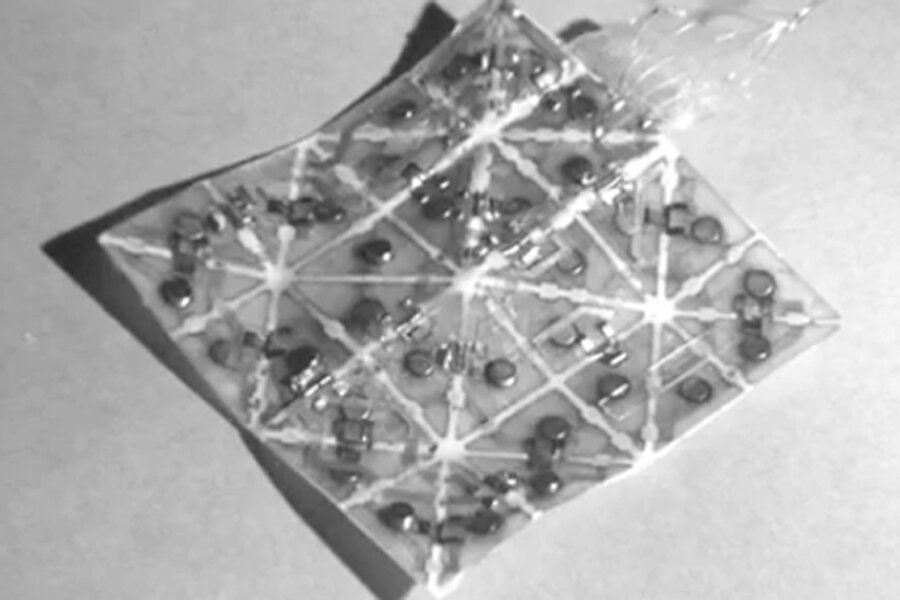'Programmable matter' can fold itself into an origami airplane
Loading...
Scientists have invented self-folding sheets of fiberglass that can flex themselves into origami airplanes and boats.
The achievement could help pave the way for "programmable matter" that could one day serve much like a Swiss Army knife, bending and creasing into any number of tools.
The sheets are each less than a half-millimeter thick and made of triangular fiberglass tiles each roughly less than a half-inch (1 cm) wide, connected together by elastic silicone rubber creases.
IN PICTURES: Developments in robotics
To make them self-folding, computer scientist Daniela Rus at MIT and her colleagues embedded strips just 100 microns thick — as wide as a human hair — made of a "shape-memory" nickel-titanium alloy that changes shape when heated or cooled. They also included flexible, stretchable copper-laminated plastic mesh ribbons on the sheets that served as wires.
When electricity running through the coppery ribbons was applied to heat the shape memory alloy strips to 70 degrees C (158 degrees F) or more, they went from flat to bent, causing the entire sheet to fold with them. In the end, the 32-tile sheets the researchers devised could fold into origami boats and
"The underlying theme here is to have a structure that can choose different shapes on demand for whatever you might use them for," said researcher Robert Wood, a roboticist at Harvard University.
"Instead of carrying a toolbox with all these specific items in them like screwdrivers and wrenches, you could carry around a small pallet of these sheets that you would use to create something for a particular function."
To program each crease to fold in the right direction and order, the researchers are developing stickers that contain all the circuits needed to connect and trigger the correct actuators for making specific complex three-dimensional shapes.
In theory, one can fold sufficiently large sheets to create any three-dimensional shape. In practice, however, the researchers are limited by the size, width and flexibility of the sheets and their components. Still, the researchers foresee a number of potential applications:
- Measuring cups that fold to hold anywhere from a quarter teaspoon to multiple cups.
- Shelves that fold into as many divisions as required.
- A puckering sheet that can display information for the blind or people in the dark.
- A Swiss army knife of sorts able to form a tripod, wrench, antenna, or splint.
Currently the researchers power the sheets by wiring them to external controllers. Wood suggests that future sheets could include energy storage or energy harvesting layers, such as solar panels. They could also be wirelessly powered.
As manufacturing techniques for these sheets improve, the researchers could make larger sheets composed of smaller tiles. "We could reasonably get down to tiles a few millimeters large," Wood said.
Instead of employing shape memory alloy strips, the actuators could be made of a number of other materials as well, such as artificial muscles, the researchers say. "We could also think of sheets that not only change shape but also structural or electromagnetic properties as well," Wood said.
The researchers detailed their findings online June 28 in the Proceedings of the National Academy of Sciences.





